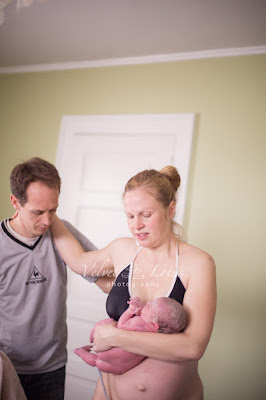I want to share two fascinating pieces that make a case for respecting and facilitating the hormonal physiology of childbirth, with the end goal of healthier mother-baby pairs:
The first is the article "Hormonal Physiology of Childbearing, an Essential Framework for Maternal–Newborn Nursing" by Carol Sakala, Amy M. Romano, and Sarah J. Buckley (JOGNN 45.2 264-275). From the abstract:
Knowledge of the hormonal physiology of childbearing is foundational for all who care for childbearing women and newborns. When promoted, supported, and protected, innate, hormonally driven processes optimize labor and birth, maternal and newborn transitions, breastfeeding, and mother–infant attachment. Many common perinatal interventions can interfere with or limit hormonal processes and have other unintended effects. Such interventions should only be used when clearly indicated. High-quality care incorporates salutogenic nursing practices that support physiologic processes and maternal–newborn health.
The second is a PhD thesis by Florence Anne Saxton of Southern Cross University: Pronurturance at birth and risk of postpartum haemorrhage: biology, theory and new evidence. (PDF here) From the abstract:
Background: In spite of the almost universal adoption of the active management of the 3rd stage of labour, postpartum haemorrhage (PPH) rates continue to rise; reaching 19% or more in some obstetric units. Conversely, there is emerging evidence that women who experience continuity of midwifery care have lower rates of PPH. Continuity of midwifery care normally includes immediate skin-to-skin contact and early breastfeeding in the 3rd and 4th stages of labour to optimise release of endogenous oxytocin. The objective was to determine if skin-to-skin contact and breastfeeding at birth affected the rate of early PPH in a group of mixed risk Australian women.
Method: De-identified birth records (N=11,219) for the calendar years 2009 and 2010 were extracted from the electronic ObstetriX database which records public sector births in New South Wales, Australia. Excluded (n = 3,671) were all cases where skin-to-skin and breastfeeding immediately after birth was not possible leaving 7,548 cases for analysis. The outcome measure was PPH of 500 ml or more; the independent variables were ‘skin-to-skin contact’ and ‘breastfeeding’ at birth (the combination of these two variables I ultimately termed pronurturance). Analyses were conducted to determine the risk of PPH for women who experienced skin-to-skin contact and breastfeeding at birth in the 3rd and 4th stages of labour compared with those women who did not (regardless of the woman’s risk status or mode of birth).
Results: Women who experienced skin-to-skin contact and breastfeeding at birth had an almost fourfold decrease in risk of PPH, (OR 0.26, 95% CI 0.20-0.33, p < 0.001). After adjustment for covariates women who experienced skin-to-skin contact and breastfeeding at birth were again less likely to have a PPH (OR 0.55, 95% CI 0.41-0.72, p < 0.001). This protective effect of ‘pronurturance’ on PPH held true in sub-analyses for both women at ‘lower’ risk (OR 0.22, 95% CI 0.17-0.30, p < 0.001) and ‘higher’ risk (OR 0.37, 95% CI 0.24-0.57, p < 0.001) of PPH.
Conclusion: These results suggest that skin-to-skin contact and breastfeeding in 3rd and 4th stages of labour was effective in reducing the risk of PPH in a group of mixed risk Australian women. The explanation of this finding is that skin-to-skin contact and breastfeeding promote optimal endogenous oxytocin release. Skin-to-skin contact and breastfeeding at birth has shown no known negative effects and should be encouraged for all women during 3rd and 4th stage labour care.
Here are some core elements of a physiological labor & birth
Mother moves freely & chooses her positions during labor
Quiet, private environment
Unobtrusive birth attendants
Spontaneous, mother-directed pushing and upright maternal positioning
Immediate & prolonged skin-to-skin contact
Still skin-to-skin, even when moving from tub to bed
Skin-to-skin and breastfeeding ad infinitum











0 comments:
Post a Comment